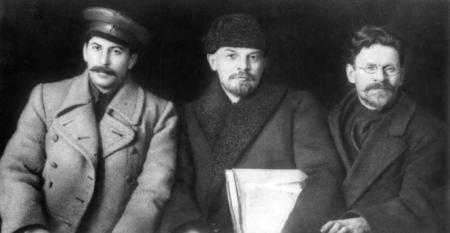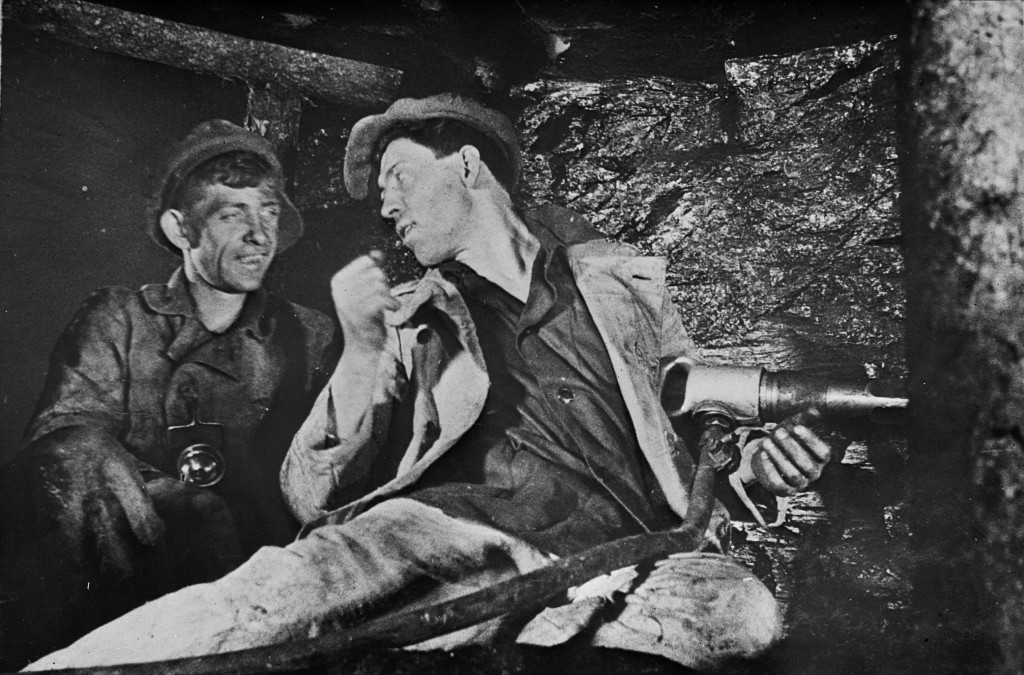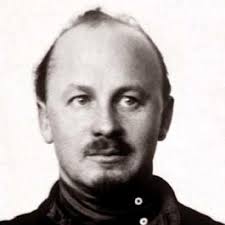
Friends and “Enemies of the People.” High Stalinism was an era of extremes. Some were reflected in the explosive growth of the Soviet economy in the 1930s and the glorification of the “heroic worker,” as you can see in this heroic depiction of the Stakhanovite

movement (video). Yet Stalin’s rule was also characterized by mass terror and the destruction of the old communist elite. It is disturbing and intriguing that so many people went along with these abuses. How can we explain the devotion of ordinary Russians to Stalin in this video and this hymn?
-
“Z”, “To the Stalin Mausoleum,” section VI.
- John Scott, Behind the Urals.
As you read Scott’s book, watch this heroic depiction of the construction of Magnitogorsk by the Soviet director Sergei Eisenstein: WATCH
13. FILM: Wednesday, February 11
Film: “The Inner Circle”
This is a remarkably good film about devotion to Stalin’s and the tragic consequences of that devotion. We will watch the first half during class. To give you flexibility, we will then hold evening showings of the remainder of the film, both this evening (Feb. 11) and tomorrow evening (Feb. 12). Both evening showings will be at 7:00 in 224 DeBartolo Hall . Please plan ahead to attend one of these showings.
14. DISCUSSION SECTION: February 13
In this section, we will discuss Scott’s Behind the Urals. I am especially interested in the contrasts you can see behind Scott’s early years in Magnitogorsk and his experiences when Stalin’s terror begins to set in.
I strongly recommend that you begin reading Arthur Koestler’s Darkness at Noon. It is a dense but fascinating book. You will need to be prepared to discuss it at next Friday’s discussion section.
As you read Darkness at Noon, you will see that it represents a different approach to Stalin’s Terror than Scott’s. Of course, the former is a novel and the latter is autobiographical, but look for the differences in interpretation.
15. LECTURE: Monday, February 16
The Path of Armed Struggle. To complement my discussion of Stalin’s rise to power, I will address the Chinese revolution and the quite different path that Mao Zedong followed, especially during the formative period of the “Long March” of 1934-1935. Mao’s ability to foment revolution in the countryside occurred as much because of the unintended consequences of others’ actions as it did of his own designs. There is no greater symbol of Chinese communism than the Mao’s role in Long March.
- William Rosenberg and Marilyn Young,Transforming Russia and China, pp. 135-47.
- Mao Zedong, “Rectify the Party’s Style of Work,” February 1, 1942: HERE (Print and Read)
16. LECTURE: Wednesday, February 18
The Stalinist Model spreads to East-Central Europe. In this lecture, I examine Stalinism’s impact on other European settings immediately after WWII.
- Wolfgang Leonhard, Child of the Revolution, “The Comintern School,” in your Course Reader.
17. DISCUSSION SECTION: Friday, February 20

In his section, we focus on Koestler’s portrayals of communist leaders and followers. What are the functions served by characters like Rubashov, Ivanov, Little Loewy, Richard, Arlova, and Gletkin? How does Koestler’s use of these characters constitute an argument, and not just a story?
Paragraph assignment: If you had to identify the single most important difference between Koestler and Scott’s accounts, what would it be? Make sure you justify your choice.
-
Arthur Koestler, Darkness at Noon. Complete the book.
-
Read Nikolai Bukharin’s secret letter to Stalin, December 10, 1937: HERE
Your First Essay Assignment is HERE
18. LECTURE: Monday, February 23
The Path of the Populist Revolutionary. Today, I will consider the path to power of two populist revolutionaries, Fidel Castro and (at least mythologically) Kim Il-Sung. Just as in China, guerrilla warfare had a decisive impact on Cuban and North Korean communism. In fact, Castro only proclaimed his allegiance to world communism after coming to power. To get a feel for the distinctive culture of Cuban socialism, watch these interviews (video) with some of Fidel’s former guerrilla fighters. Likewise, one cannot overstate the distinctive character of North Korean communism. If you are interested, you can see some photos from my visit to Pyongyang HERE.
- Fidel Castro, “The Revolution Begins Now” (excerpt), January 3, 1959: HERE (Print)
- Brief background on Fidel and the
Cuban revolution: HERE - Background on North Korea, “Origins of the Democratic People’s Republic of Korea”: HERE
- Kim Il-sung, “On Eliminating Dogmatism and Formalism and establishing Juche in Ideological Work” (1955): HERE
The use of electronic devices of any kind, including laptops, cell phones, film projectors, video cameras, and personal digital devices, is prohibited in my classroom!
